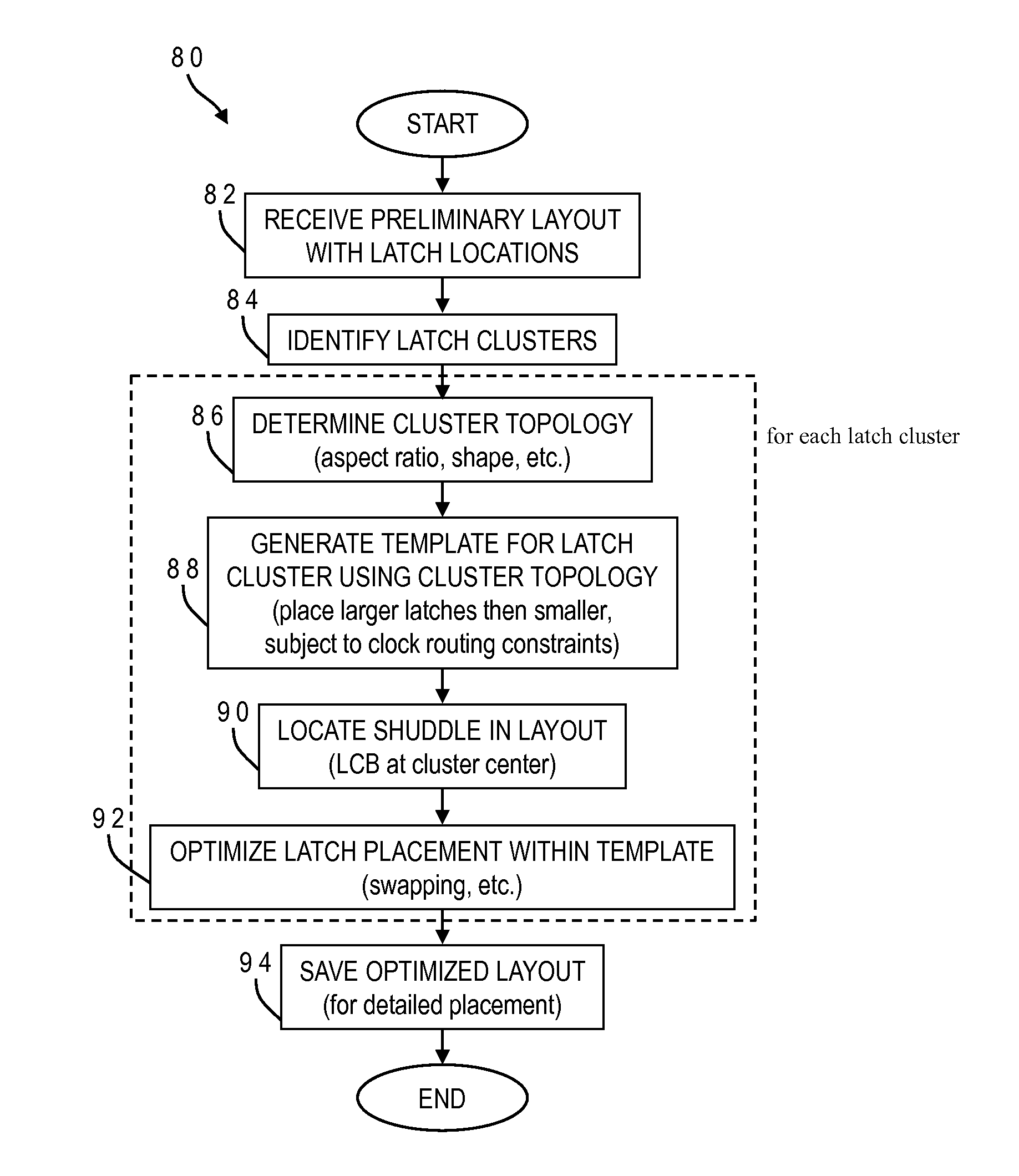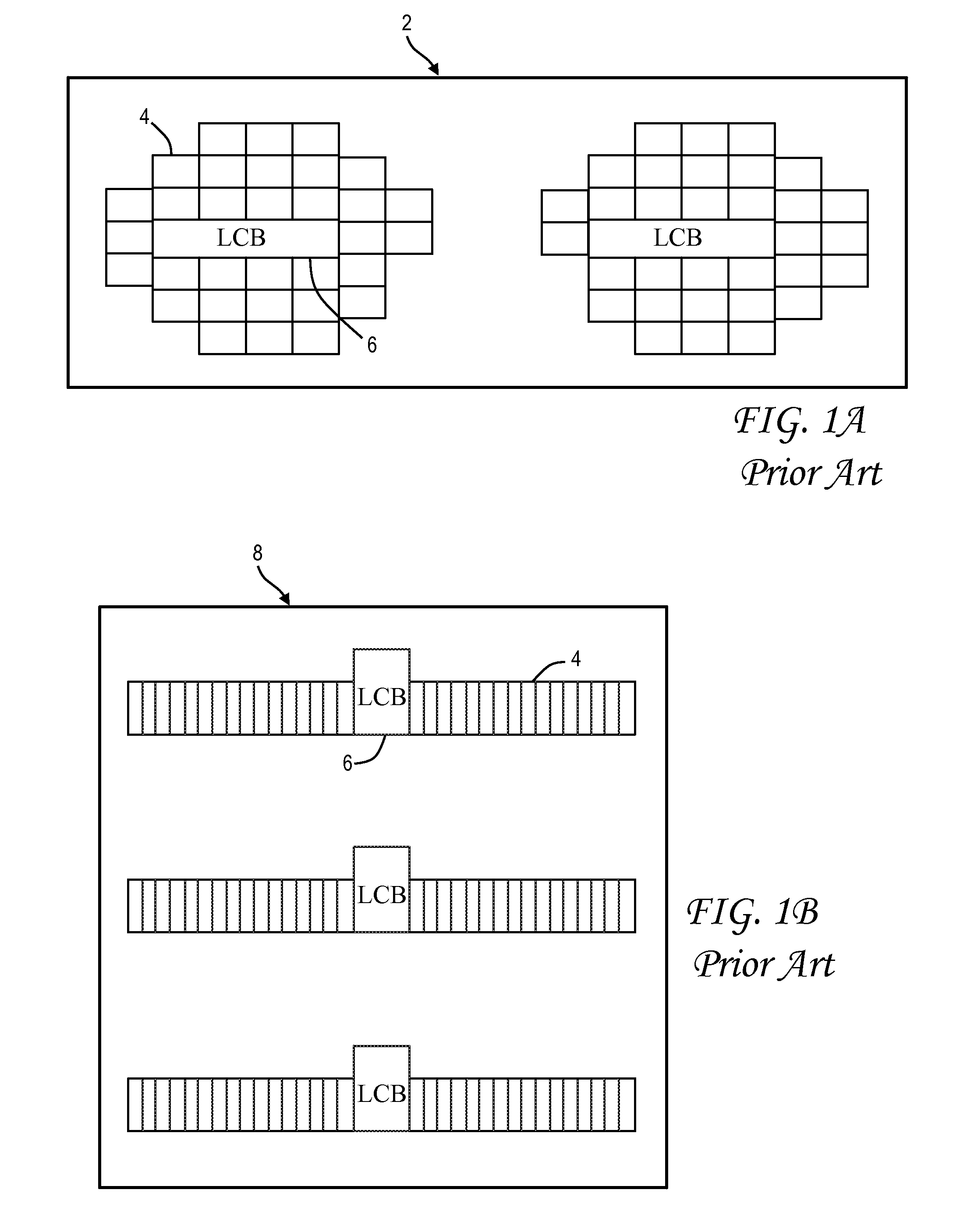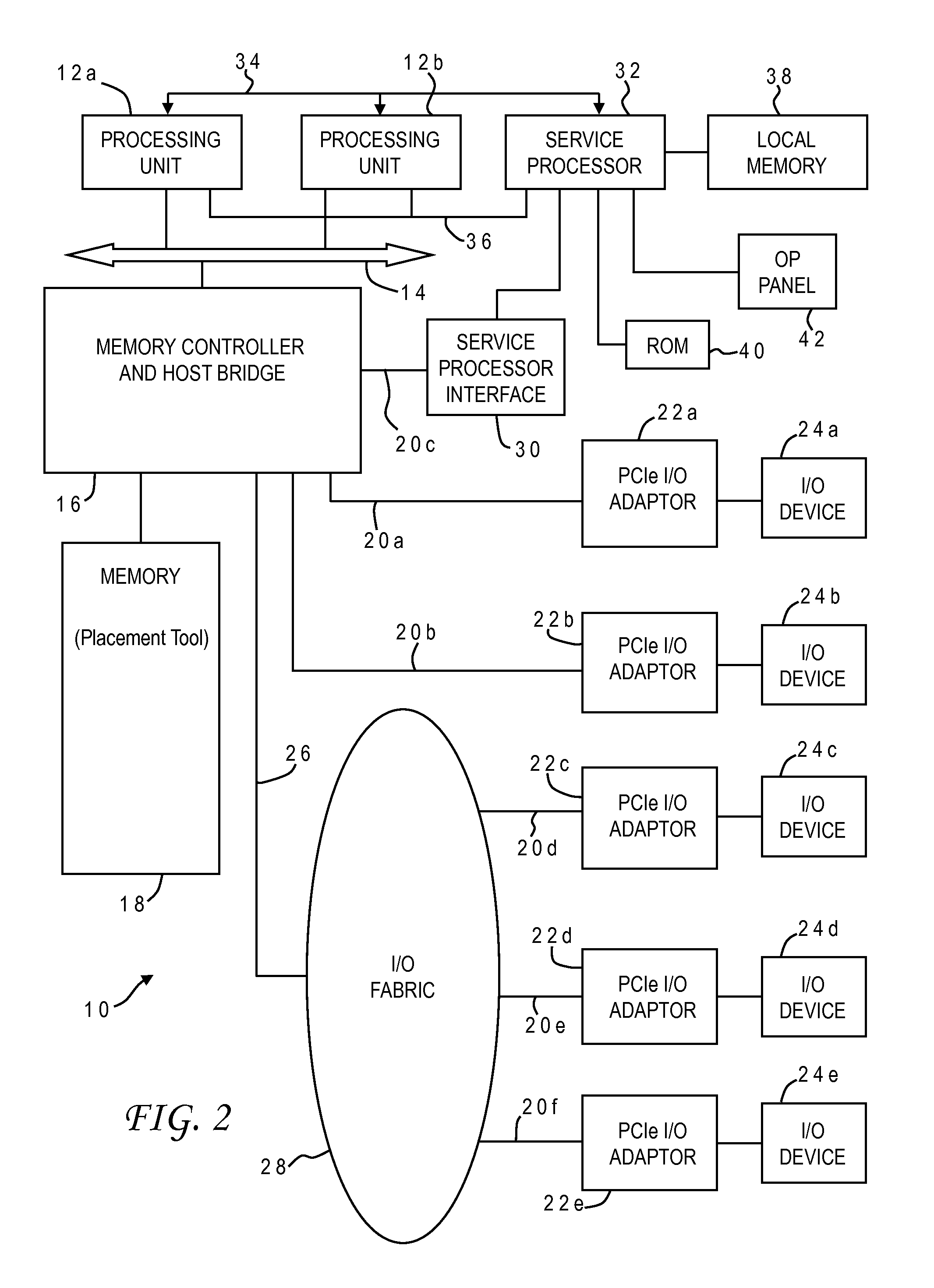Structured placement of latches/flip-flops to minimize clock power in high-performance designs
a latch and latch-flip technology, applied in the direction of instruments, computing, electric digital data processing, etc., can solve the problems of large number of cells, difficult to achieve physical design without the aid of computers, and complex connections between cells, so as to minimize the total length of the overall layout and optimize latch placement within the cluster
- Summary
- Abstract
- Description
- Claims
- Application Information
AI Technical Summary
Benefits of technology
Problems solved by technology
Method used
Image
Examples
Embodiment Construction
)
[0019]While existing approaches to latch clustering have certain benefits, they all still suffer other disadvantages. For example, while the huddle placement approach is more compact and is easily legalized, it places the latches around an LCB in an amorphous manner with no notion of a structure or regularity, which increases local congestion in and around the huddles. In addition, this approach does not pay any attention to the topology of the clock wires from the subsequent clock routing stage which can increase clock network wirelength after the clock routing stage, leading to higher clock wire capacitance (more power) as well as degraded skew. Structured placement can result in improved skew, power and slew compared to a huddle placement, but a structured placement is not compact, often cannot be legalized, and may hurt routability and overall wiring. It would, therefore, be desirable to devise an improved method of latch-LCB clustering which could retain benefits of both of th...
PUM
 Login to View More
Login to View More Abstract
Description
Claims
Application Information
 Login to View More
Login to View More - R&D
- Intellectual Property
- Life Sciences
- Materials
- Tech Scout
- Unparalleled Data Quality
- Higher Quality Content
- 60% Fewer Hallucinations
Browse by: Latest US Patents, China's latest patents, Technical Efficacy Thesaurus, Application Domain, Technology Topic, Popular Technical Reports.
© 2025 PatSnap. All rights reserved.Legal|Privacy policy|Modern Slavery Act Transparency Statement|Sitemap|About US| Contact US: help@patsnap.com



